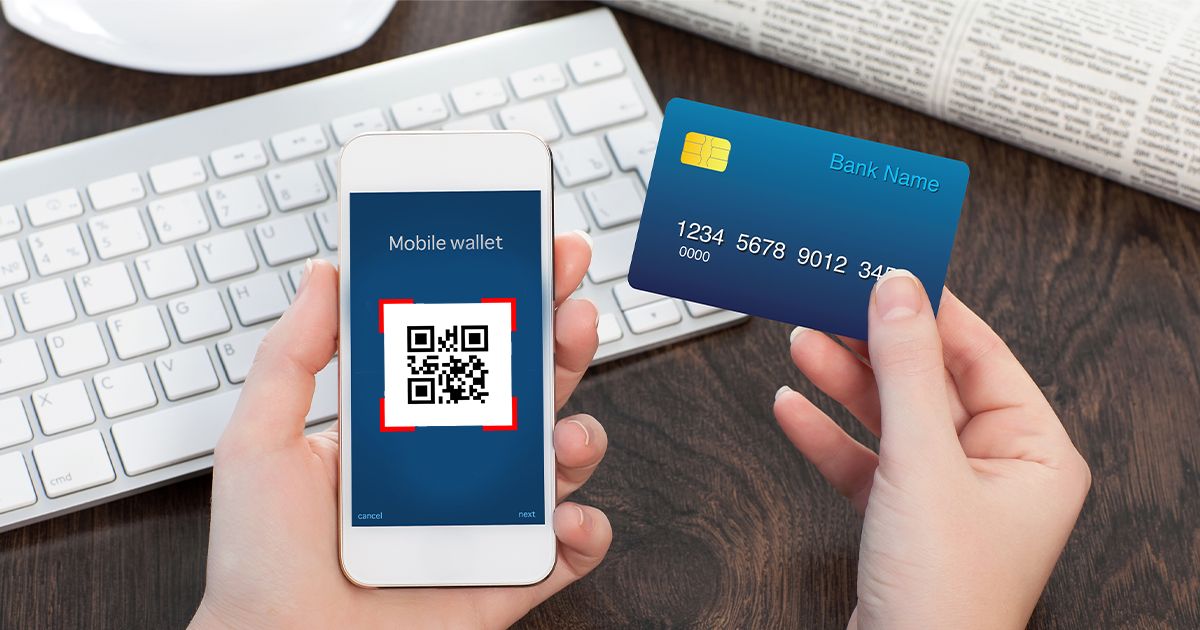
| December 8th, 2023 |
QR Code Payments — Redefining Credit Card Processing for a Digital Economy!
In the ever-evolving landscape of financial technology, the fusion of QR codes with credit card processing heralds a transformative era. QR code payments once considered a novelty, have rapidly gained traction globally, reshaping how consumers and businesses engage in transactions. This blog delves into the profound impact, evolving trends, and the promising future of QR code payments in credit card processing.
Evolution of QR Code Payments —
QR (Quick Response) codes, invented in 1994, found early adoption in the realm of marketing and inventory management. However, their potential in facilitating seamless transactions remained largely untapped until recent years. With the proliferation of smartphones equipped with high-quality cameras and secure payment technologies, QR codes emerged as a convenient, contactless payment method.
Advantages Fuelling Adoption —
The allure of QR code payments lies in their simplicity and versatility. For consumers, scanning a QR code to initiate a payment is intuitive and expedient. It eradicates the need for physical cards or cash, promoting a frictionless payment experience. Moreover, merchants benefit from reduced transaction costs compared to traditional card payments and gain access to a broader consumer base without significant infrastructure investments.
Current Landscape & Market Dynamics —
The adoption of QR code payments varies across regions. In some Asian countries like China and India, QR codes have become ubiquitous, powering a significant portion of everyday transactions. However, in other parts of the world, adoption rates vary due to factors such as infrastructure readiness, consumer behavior, and regulatory frameworks.
Major players in the financial and tech sectors have recognized the potential of QR code payments and are actively investing in this space. Partnerships between payment processors, fintech startups, and traditional financial institutions are reshaping the ecosystem, aiming to standardize and streamline QR code payment solutions globally.
Future Trends & Innovations —
Looking ahead, several trends are poised to define the future of QR code payments in credit card processing:
1. Enhanced Security Measures:
Continued efforts to fortify security protocols will be pivotal. Advanced encryption, tokenization, and biometric authentication will bolster QR code payment security, mitigating concerns related to fraud and data breaches.
2. Interoperability & Standardization:
Efforts to establish interoperable QR code standards are underway to ensure seamless transactions across various payment networks and platforms. Standardization will enhance user experience and encourage widespread adoption.
3. Integration with Emerging Technologies:
Integration with emerging technologies like augmented reality (AR) and Internet of Things (IoT) devices will broaden the scope of QR code applications. AR-powered shopping experiences and IoT-enabled payments will redefine convenience and personalization.
4. Contactless & Omnichannel Experiences:
QR codes will continue to enable contactless transactions, catering to the growing preference for touch-free interactions, especially in a post-pandemic world. Additionally, QR codes will bridge the gap between online and offline retail, facilitating a seamless omnichannel experience for consumers.
Implications for Credit Card Processing —
The symbiotic relationship between QR code payments and credit card processing is poised to reshape the financial landscape:
1. Enhanced Accessibility & Inclusion:
QR code payments democratize access to financial services, enabling micro-merchants and individuals in underserved areas to participate in the digital economy, thereby fostering financial inclusion.
2. Disruption of Traditional Payment Channels:
The growing popularity of QR code payments may gradually challenge the dominance of traditional credit card networks. While cards remain prevalent, QR codes offer a compelling alternative, especially for smaller businesses and peer-to-peer transactions.
3. Data-Driven Insights & Personalization:
The digitized nature of QR code transactions generates vast amounts of data. Leveraging this data through analytics and AI algorithms presents opportunities for personalized marketing, improved customer experiences, and more robust risk management strategies.
4. Evolution of Loyalty Programs & Customer Engagement:
QR code payments have the potential to revolutionize loyalty programs and customer engagement strategies. Integrating loyalty rewards directly into QR code transactions offers a seamless experience for consumers, encouraging repeat business. Merchants can leverage transaction data to tailor personalized offers and incentives, enhancing customer retention and loyalty.
5. Cost Efficiency & Merchant Adoption:
For merchants, embracing QR code payments can significantly reduce operational costs associated with credit card processing fees. The simplicity of QR code transactions, coupled with lower transaction costs, makes it an attractive proposition, especially for small and medium-sized enterprises (SMEs). As more businesses adopt QR code payments, the collective shift could reshape the fee structures in the payments industry, potentially impacting credit card processors.
6. Regulatory Adaptation & Compliance:
Regulatory frameworks governing QR code payments and credit card processing will require continual adaptation to ensure consumer protection, data privacy, and fair competition. Regulators must strike a balance between fostering innovation and safeguarding financial stability. Harmonizing regulations across borders becomes crucial as QR code payments transcend geographical boundaries, necessitating standardized practices to mitigate risks and ensure consistent user experiences.
7. Internationalization & Cross-Border Transactions:
QR code payments have the potential to streamline cross-border transactions, simplifying international commerce. With standardized QR code formats and interoperability, businesses can expand globally with reduced barriers, benefiting from faster and more cost-effective payment solutions. However, challenges related to currency conversions, regulatory divergence, and varying consumer behaviors across regions need to be addressed for seamless cross-border QR code transactions.
Regulatory Considerations & Challenges —
Amidst the promising prospects, regulatory considerations and challenges persist. Harmonizing regulatory frameworks across borders, ensuring data privacy, and addressing security concerns will be imperative to foster trust and enable seamless cross-border QR code transactions.
Conclusion —
The convergence of QR code payments and credit card processing signifies a pivotal shift in the payment landscape. As technological advancements continue to drive innovation, the future promises a dynamic ecosystem where QR codes emerge as a ubiquitous and secure payment method, transforming the way individuals and businesses transact globally. Embracing this evolution strategically will empower stakeholders to harness the full potential of QR code payments in credit card processing, revolutionizing the financial industry as we know it.